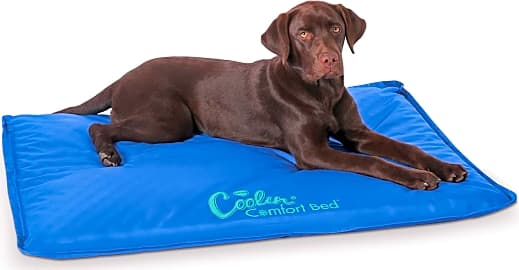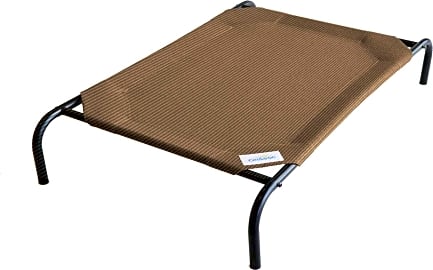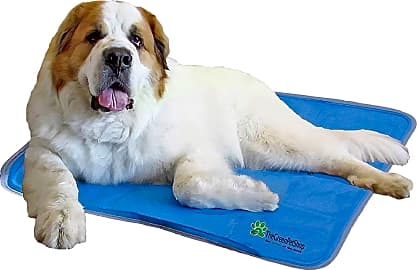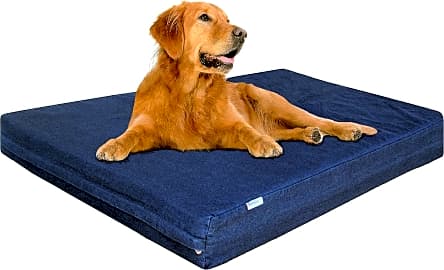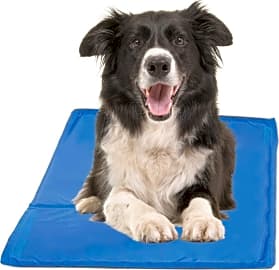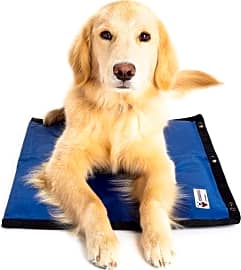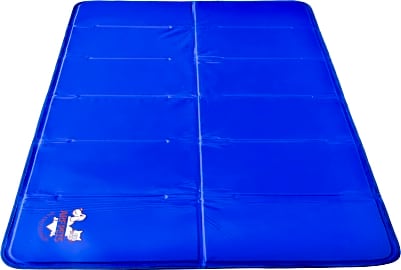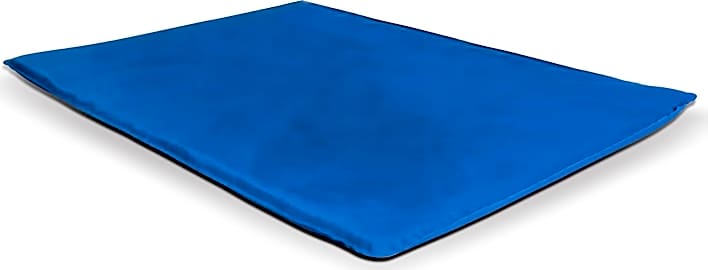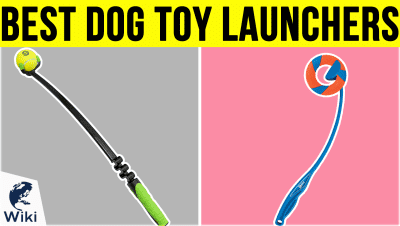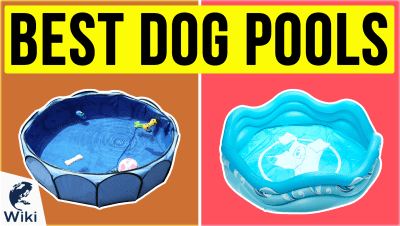The 10 Best Cooling Pads For Dogs

This wiki has been updated 33 times since it was first published in February of 2017. Sometimes, we forget that our canine companions are forced to wear permanent fur coats, which can make it difficult for them to regulate their body temperature during those "dog days" of summer. Our selection of cooling pads includes a mix of both mat- and bed-style options made with special materials designed to absorb excess body heat, giving Fido a comfortable and refreshing place to rest. When users buy our independently chosen editorial picks, we may earn commissions to help fund the Wiki.
Editor's Notes
November 27, 2020:
We feel that it's important to provide a dichotomy between the simplistic, mat-style models and those with a bit more cushion. That is not to say that any one model is better or more effective than another, but it is important to understand that like humans, dogs come in many different shapes and sizes with varying needs according to their age and energy level. Therefore, we want to make sure the category is properly represented from year to year. We've removed the Dry Kewl Evaporative, Pet Therapeutics Theracool, and Aolvo Hoopet due to availability concerns.
If you're looking for options that can be used as a dog bed, the Furhaven Orthopedic Sofa and Dogbed4less Premium easily fit the bill, the former of which offers a gel-infused memory foam core and plush bolsters on three sides. The bolsters make it a great choice for pups who prefer to nest and cuddle, as well.
Both the K&H Coolin' Comfort and K&H Cool Bed III are ideal for placement on hard floors (either indoors our outdoors) and they can be filled with water to radiate heat away from your pet's body. Similar in design, the Green Pet Shop Mat uses pressure-activated gel technology to keep any large breed canine cool for up to four hours before requiring a 20-minute recharge.
Newly added this year is the CoolerDog Hydro, which is one of the few models that utilizes a refreezable ice sheet and waterbed cushion to work its magic. We realize there may be some condensation that forms on the base as a result of melting ice, so it's a good idea to place a towel underneath this one when it's being used. Furthermore, this choice may be best as a short-term cooling solution on really hot days, but it probably isn't practical for all-day use.
June 13, 2019:
If your dog really suffers in the summertime with excessive panting and seeks out tile floors for even the smallest measure of relief, you will probably want a pressure-activated gel like the Green Pet Shop Mat for the maximum temperature relief. The Green Pet Shop brand is very durable, but as with any of the gel infused choices, if you dog does a lot of chewing a scratching, you're bound to have a sticky gel mess on your hands.
The Coolaroo Elevated and the Orthopedic Memory Foam are great options if you are worried about your dog's tendency to shred or chew, your pet will find these choice comfortable and several degrees cooler than a dog bed, and there's no liquid to worry about.
Special Honors
Snoozer Chill Out Whether your pup suffers from arthritis or needs some extra help regulating his body temperature during the summer months, the Snoozer Chill Out is a worthy addition to Fido's home accessories. This hand-sewn bed is ideal for both flat-faced and brachycephalic breeds. It comes in three sizes, four colors, and utilizes a nontoxic cooling gel to absorb a pet's excess body heat. Its removable cover is machine washable, while the breathable fabric is both stain- and water-resistant for easy cleaning. This one also includes a large resting pillow, which provides additional support for large and/or aging canines. snoozerpetproducts.com
The Importance Of Keeping Your Dog Cool
Owning a dog is one of life's great joys, but in some parts of the world, having a canine companion can be dangerous.
Owning a dog is one of life's great joys, but in some parts of the world, having a canine companion can be dangerous. This is especially true in hot, humid environments, as heatstroke, dehydration, and hyperthermia all pose big risks to your dog's health.
A dog's normal temperature is slightly higher than our own, with abnormal being anything over 103 degrees Fahrenheit. Anything over that, up to 106 degrees, is considered mild heatstroke — and anything over 106 degrees is severe. Once you start getting into severe heatstroke, your dog's life is in imminent danger, and you need to rush him to the vet immediately.
Once the mercury starts to climb, you need to take precautions to keep your pup safe. This is especially important if you have a pooch with a thick, full coat or a cold-weather breed like a Siberian Husky or Alaskan Malamute. These dogs aren't made for sultry climates, so if you live in the desert but just have to have one, be sure that you give them plenty of opportunity to beat the heat.
It's not just your dog's coat that matters, either. Dogs with short, stubby snouts (like bulldogs or pugs) have difficulty cooling themselves through panting, so they'll need a little extra help during the summer as well.
A cooling pad is a great investment for anyone living in harsh climates, as it not only cools your dog, but encourages him to rest for a bit. This reduces the chance of him over-exerting himself, speeding up the cooling process.
Of course, just throwing down one of these pads isn't always enough to keep your dog safe during a heat wave, but it's a good start. Even if your dog isn't in danger of overheating, he'll likely appreciate having a cool place to rest during the day. With that in mind, don't be surprised if the pad becomes his new favorite spot. Most importantly, though, it will give you the opportunity to take tons of adorable photos of him, and isn't that what dog ownership is really all about?
Signs Of Overheating In Dogs
While you may realize that it's dangerously hot outside, your dog might be too focused on playtime to care about any risks that he's taking. After all, who has time to take a break when there are squirrels to bark at and tennis balls to chase? So, it's up to you to make sure that your furry friend doesn't overdo it. There are some warning signs of heatstroke to watch out for, and if you see any of them, you should take your dog to the vet immediately.
It can sometimes feel like you may be overreacting if you suspect your dog's having an emergency, and false alarm vet bills can quickly add up.
His mouth is the first area to focus on. Is his tongue bright red, much redder than normal? Are his gums a different color — typically red, bluish-purple, or pale? Is he panting desperately or excessively? Is his saliva sticky, as opposed to wet and slimy? If so, it's probably worth at least calling a doctor to make sure that he'll be okay.
Next, monitor his behavior. If he's pacing and seems to be uncomfortable, you should be concerned (this is pretty much always a bad sign in dogs, even if heatstroke isn't a possibility). Lethargy is another cause for worry, as he may be too weak to move. Basically, anything too far out of the ordinary is a risk factor.
Finally, if he tries to urinate, but produces very little, it could be a sign of dehydration. Likewise, vomiting (which is different from regurgitation is a bad sign, as is the production of black, tarry stools.
It can sometimes feel like you may be overreacting if you suspect your dog's having an emergency, and false alarm vet bills can quickly add up. Still, though, it's always better to be safe than sorry. After all, the worst-case scenario in these situations is one you'll want to avoid at all costs.
Other Ways To Help Your Pooch Beat The Heat
As with most conditions, preventing heatstroke is much healthier (and cheaper) than treating it. Luckily, keeping your dog cool can be a fun and enjoyable process for both of you.
The most important thing is to make sure he always has access to lots of cool, fresh water. Keep several large bowls full, including at least one outside, and if you take him hiking, bring water with you. If you have a pool he can jump in, even better, but just make sure that he knows how to get out.
Likewise, you'll want to give him the opportunity to get out of the sun.
Likewise, you'll want to give him the opportunity to get out of the sun. Keeping him inside and surrounded by central air conditioning is obviously the best way, but if you're not willing to do that, make sure to provide shade or build him a dog house. Also — and hopefully this goes without saying — never leave him chained up to where he can't get away from the sun.
In general, you'll want to limit his activity during the hottest parts of the day. This may mean restricting his walks to early mornings or late evenings (and always check to make sure the ground isn't too hot before taking him). You can also play indoor games with him, like hide and seek, to make sure he's not bored.
It's also good to teach him tricks like "go to bed" or sit-stays, as you can force him to spend time on his cooling pad when you get concerned about his activity level. This will keep him healthy, while also giving you some alone time if you need it.
Ultimately, keeping your pet cool is mostly common sense, and you'll likely find that many of these techniques help you bond with your dog, as well. At the end of the day, a cool dog is a happy dog — and there's absolutely nothing in this world better than a happy dog.


